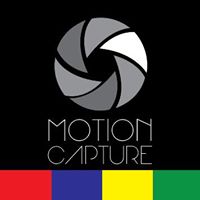Posted on
April 8th, 2019 by
RESCUECOM
 Starting, maintaining, and growing a business is no easy task. It is even more difficult when you face a bully which happens to be a much larger, better-known business threatening you to use their service or face destruction for refusing them. Nonetheless, this has been the case for many businesses, from very large corporations to tiny businesses struggling to make rent month to month to every type of business in between. This is because of an online company utilizing a rating system of individual user reviews to leverage businesses, ultimately, to believe they require its services or they will suffer. The company responsible for this behavior and for the subsequent difficulties of many businesses as a result? Yelp, a name with which anyone who has searched for a business on the Internet or knows anything about online reviewing is familiar. Many have found its services helpful since its founding in 2004, and it does seem like a good thing. When a business model like Yelp’s becomes abusive and resorts to bullying to make money from businesses who need to have a positive presence online, though, things can go very bad quickly. This is, in fact, exactly what has happened in the fifteen years Yelp has been operating online. Read more »
Starting, maintaining, and growing a business is no easy task. It is even more difficult when you face a bully which happens to be a much larger, better-known business threatening you to use their service or face destruction for refusing them. Nonetheless, this has been the case for many businesses, from very large corporations to tiny businesses struggling to make rent month to month to every type of business in between. This is because of an online company utilizing a rating system of individual user reviews to leverage businesses, ultimately, to believe they require its services or they will suffer. The company responsible for this behavior and for the subsequent difficulties of many businesses as a result? Yelp, a name with which anyone who has searched for a business on the Internet or knows anything about online reviewing is familiar. Many have found its services helpful since its founding in 2004, and it does seem like a good thing. When a business model like Yelp’s becomes abusive and resorts to bullying to make money from businesses who need to have a positive presence online, though, things can go very bad quickly. This is, in fact, exactly what has happened in the fifteen years Yelp has been operating online. Read more »

Posted on
October 10th, 2018 by
RESCUECOM
 SYRACUSE, NY
SYRACUSE, NY
October 15, 2018
Samsung beats everyone, including Apple, in reliability this holiday season. It is the best choice for anyone’s computer needs, delivering more tech for less money. Read more »
Posted on
August 24th, 2018 by
RESCUECOM
 The so-called “virtual assistant” seems like a natural progression in the evolution of our technology. Just about everyone wishes they could afford to have a personal assistant and, until the modern technological age, only certain people could afford to do so. Sure, parents help their children by getting them up for school in the morning, friends help us to remember or perform everyday tasks, and almost everyone has got someone in their life who can perform some sort of assistance for them. Only within the last few decades, however, have we been able to say our tech can serve the same function as having a personal assistant walking around with us every day would. We refer to the ability of our smartphones and mobile devices in particular to provide these services to us as virtual assistance. The software programs which would qualify as such we call virtual assistants, of course, but the questions are myriad. What exactly are they, what exactly can they do and to what extent, and what will be their function as tech develops and how much will they be able to do in the future? We are all, for the most part, aware of the many things our cell phones can actually do, and so much so most of us take for granted a simple but profound fact: getting the kind of help we can simply reach into our pocket for now used to be impossible. Virtual assistants are nothing more than software, but they accomplish a vast number of things we no longer have to do manually. As is the point of such technology, this saves us more time, money, and effort even those of us who lived before cell phones and mobile tech may often fail to realize. Read more »
The so-called “virtual assistant” seems like a natural progression in the evolution of our technology. Just about everyone wishes they could afford to have a personal assistant and, until the modern technological age, only certain people could afford to do so. Sure, parents help their children by getting them up for school in the morning, friends help us to remember or perform everyday tasks, and almost everyone has got someone in their life who can perform some sort of assistance for them. Only within the last few decades, however, have we been able to say our tech can serve the same function as having a personal assistant walking around with us every day would. We refer to the ability of our smartphones and mobile devices in particular to provide these services to us as virtual assistance. The software programs which would qualify as such we call virtual assistants, of course, but the questions are myriad. What exactly are they, what exactly can they do and to what extent, and what will be their function as tech develops and how much will they be able to do in the future? We are all, for the most part, aware of the many things our cell phones can actually do, and so much so most of us take for granted a simple but profound fact: getting the kind of help we can simply reach into our pocket for now used to be impossible. Virtual assistants are nothing more than software, but they accomplish a vast number of things we no longer have to do manually. As is the point of such technology, this saves us more time, money, and effort even those of us who lived before cell phones and mobile tech may often fail to realize. Read more »

Posted on
August 17th, 2018 by
RESCUECOM
 Everyone knows what WiFi is, or at least what it does for them. It is something more people use now than ever before in human history, and the number continues to grow. It has pervaded everyone’s life and brought us the world in a way never possible before the modern age of technology. WiFi gives us the potential to see and know more than we ever thought we could and communicate with people around the world with which we would never have had contact as recently as a few decades ago. What exactly is WiFi, though? Many people who know the ins and outs of what it does would find this a difficult question to answer, as simple as it seems. The dictionary defines it as “a facility allowing computers, smartphones, or other devices to connect to the Internet or communicate with one another wirelessly within a particular area.” Most think it basically is the Internet, and almost everyone knows it at least as something allowing us to connect to it. There are many nuances and specifics to it, however, ones this definition cannot really clarify. Its purpose, certainly, is to allow us to connect to the world of the Internet which allows us to see, hear, and know more than previously imaginable. It allows us to do this anywhere at any time, as long as a connection is possible. It is the specifics which can confuse people, and only the more technically-minded can really know exactly how WiFi works, the difference between it and the Internet, its history, how it can evolve in the future, and its various applications. If you are not a tech-savvy person, chances are you do not understand these things, but it is really not particularly difficult once you know the essentials. Read more »
Everyone knows what WiFi is, or at least what it does for them. It is something more people use now than ever before in human history, and the number continues to grow. It has pervaded everyone’s life and brought us the world in a way never possible before the modern age of technology. WiFi gives us the potential to see and know more than we ever thought we could and communicate with people around the world with which we would never have had contact as recently as a few decades ago. What exactly is WiFi, though? Many people who know the ins and outs of what it does would find this a difficult question to answer, as simple as it seems. The dictionary defines it as “a facility allowing computers, smartphones, or other devices to connect to the Internet or communicate with one another wirelessly within a particular area.” Most think it basically is the Internet, and almost everyone knows it at least as something allowing us to connect to it. There are many nuances and specifics to it, however, ones this definition cannot really clarify. Its purpose, certainly, is to allow us to connect to the world of the Internet which allows us to see, hear, and know more than previously imaginable. It allows us to do this anywhere at any time, as long as a connection is possible. It is the specifics which can confuse people, and only the more technically-minded can really know exactly how WiFi works, the difference between it and the Internet, its history, how it can evolve in the future, and its various applications. If you are not a tech-savvy person, chances are you do not understand these things, but it is really not particularly difficult once you know the essentials. Read more »

Posted on
August 10th, 2018 by
RESCUECOM
 The term “self-driving car” and the thought of one probably conjures up thoughts in most peoples’ minds of someone eating, reading, or even sleeping while their car drives them where they want to go. They may think mainly of Tesla and Uber, arguably the two largest companies most heavily in the development and application of autonomous, or self-driving, cars. Like many technologies, this one has roots much earlier than many would think. Unlike many technologies developed over a long stretch of time and only being perfected today, however, vehicular autonomy, or the ability of a vehicle to drive itself without human assistance, did not have the potential to exist at the time it was imagined. While the idea existed, the technology available simply did not allow for its application. This is particularly interesting given the normal course of technological progress wherein an idea develops and a very crude prototype created, and inventors continue to create more advanced prototypes until technology allows for a much more useable application or even perfection. Another thing making the case of autonomous vehicular technology even more interesting is the case of the airplane. Lawrence Sperry, the head of the Sperry Corporation, an aviator, and the son of then-famous inventor Elmer Sperry, invented autopilot for airplanes in 1912. This was not even a decade after the Wright brothers’ famous first successful flight at Kittyhawk, North Carolina in 1903. Read more »
The term “self-driving car” and the thought of one probably conjures up thoughts in most peoples’ minds of someone eating, reading, or even sleeping while their car drives them where they want to go. They may think mainly of Tesla and Uber, arguably the two largest companies most heavily in the development and application of autonomous, or self-driving, cars. Like many technologies, this one has roots much earlier than many would think. Unlike many technologies developed over a long stretch of time and only being perfected today, however, vehicular autonomy, or the ability of a vehicle to drive itself without human assistance, did not have the potential to exist at the time it was imagined. While the idea existed, the technology available simply did not allow for its application. This is particularly interesting given the normal course of technological progress wherein an idea develops and a very crude prototype created, and inventors continue to create more advanced prototypes until technology allows for a much more useable application or even perfection. Another thing making the case of autonomous vehicular technology even more interesting is the case of the airplane. Lawrence Sperry, the head of the Sperry Corporation, an aviator, and the son of then-famous inventor Elmer Sperry, invented autopilot for airplanes in 1912. This was not even a decade after the Wright brothers’ famous first successful flight at Kittyhawk, North Carolina in 1903. Read more »

Posted on
August 3rd, 2018 by
RESCUECOM
 Like many innovations just coming to fruition, smart glasses are a technology people first began dreaming of long ago. Wearable tech has always fascinated people, though until the modern age of technology it was impossible to pull off, and the idea of a wearable display has been arguably the most fascinating idea to people for some time. In fact, while Thelma McCollum’s name might not be one everyone knows or thinks of when they think back on great inventors, she actually has patents for dozens of new technologies in the 1940s and beyond. One of these was a patent for a device she referred to as a “stereoscopic television apparatus.” This was in 1945 and, sadly, became largely forgotten. It was not until some fifteen years later or so, in 1960, anybody really began taking the idea of a wearable display with any seriousness. While nothing really came to a real fulfilment, Morton Heilig fascinated people with the idea. Nobody at the time could believe it was even possible but, sure enough, Heilig applied for and received a patent for his own, less bulky, version of a head-mounted display. He followed this up in 1962 with his patent for the “Sensorama Simulator,” a virtual reality simulator complete with handlebars, a binocular display, a vibrating seat, stereophonic speakers, cold air blower, and a device close to the nose which would generate odors according to the action in the film. The intention of this device was to completely immerse a film viewer in every aspect of the film in a way we still cannot quite accomplish, but it was a bold effort to be sure. Obviously, the sheer bulk of such a device made its use impractical en masse, but he did create his dream via an arcade-style machine which played a 3D film along with stereo sound, vibration, smells, and wind. With this machine, he achieved his dream of creating a completely immersive sensory environment, but it would be several more years before the dream of making a truly wearable device would occur. Read more »
Like many innovations just coming to fruition, smart glasses are a technology people first began dreaming of long ago. Wearable tech has always fascinated people, though until the modern age of technology it was impossible to pull off, and the idea of a wearable display has been arguably the most fascinating idea to people for some time. In fact, while Thelma McCollum’s name might not be one everyone knows or thinks of when they think back on great inventors, she actually has patents for dozens of new technologies in the 1940s and beyond. One of these was a patent for a device she referred to as a “stereoscopic television apparatus.” This was in 1945 and, sadly, became largely forgotten. It was not until some fifteen years later or so, in 1960, anybody really began taking the idea of a wearable display with any seriousness. While nothing really came to a real fulfilment, Morton Heilig fascinated people with the idea. Nobody at the time could believe it was even possible but, sure enough, Heilig applied for and received a patent for his own, less bulky, version of a head-mounted display. He followed this up in 1962 with his patent for the “Sensorama Simulator,” a virtual reality simulator complete with handlebars, a binocular display, a vibrating seat, stereophonic speakers, cold air blower, and a device close to the nose which would generate odors according to the action in the film. The intention of this device was to completely immerse a film viewer in every aspect of the film in a way we still cannot quite accomplish, but it was a bold effort to be sure. Obviously, the sheer bulk of such a device made its use impractical en masse, but he did create his dream via an arcade-style machine which played a 3D film along with stereo sound, vibration, smells, and wind. With this machine, he achieved his dream of creating a completely immersive sensory environment, but it would be several more years before the dream of making a truly wearable device would occur. Read more »

Posted on
July 27th, 2018 by
RESCUECOM
 Motion capture is not new to film, nor is it any longer a particularly difficult thing to do. Simply put, motion capture (mocap or mo-cap for short), is the process of recording the movement of objects or people. This has applications beyond filmmaking including many fields such as sports, government, military, medical, and robotics. Its main use to date, however, had been in the enhancement of films using computer technology to either add realism or place elements it would not be safe, practical, or financially advantageous to do otherwise. While referred to as motion tracking when used for other purposes, in filmmaking and games this process more commonly refers to “match moving.” This is a cinematic technique allowing for the insertion of computer graphics into live-action footage and takes more skill to do so with the correct position, scale, orientation, and motion. This means that, at its most advanced, only high budget films can achieve truly professional results and must rely on professional cinematographers as well as a huge staff of animators. It can take a lot of money and a great deal of skill to get the cleanest, most realistic results as well as to insert computerized elements into a film that are all perfect relative to all of the objects or actors in the shot. This does not mean that others cannot use it effectively, though that has been the case in years past. Now, with advancements in tech bringing the necessary software to utilize motion capture to users commercially on a much larger scale, it is possible for more and more less professional videographers to use without needing the money or professional expertise formerly needed. Not only that, but evolving tech makes it much easier and faster to use to a smaller extent. Read more »
Motion capture is not new to film, nor is it any longer a particularly difficult thing to do. Simply put, motion capture (mocap or mo-cap for short), is the process of recording the movement of objects or people. This has applications beyond filmmaking including many fields such as sports, government, military, medical, and robotics. Its main use to date, however, had been in the enhancement of films using computer technology to either add realism or place elements it would not be safe, practical, or financially advantageous to do otherwise. While referred to as motion tracking when used for other purposes, in filmmaking and games this process more commonly refers to “match moving.” This is a cinematic technique allowing for the insertion of computer graphics into live-action footage and takes more skill to do so with the correct position, scale, orientation, and motion. This means that, at its most advanced, only high budget films can achieve truly professional results and must rely on professional cinematographers as well as a huge staff of animators. It can take a lot of money and a great deal of skill to get the cleanest, most realistic results as well as to insert computerized elements into a film that are all perfect relative to all of the objects or actors in the shot. This does not mean that others cannot use it effectively, though that has been the case in years past. Now, with advancements in tech bringing the necessary software to utilize motion capture to users commercially on a much larger scale, it is possible for more and more less professional videographers to use without needing the money or professional expertise formerly needed. Not only that, but evolving tech makes it much easier and faster to use to a smaller extent. Read more »

Posted on
July 20th, 2018 by
RESCUECOM
 Photography has existed for over 150 years, and photography has been a hobby everyone could enjoy for around 100. The term “computational photography,” (also called “computational imaging”) of course, is a much more modern term that goes far beyond what traditional photography has to offer. Its purpose is to overcome the limitations of traditional photography using tech. It utilizes the newest developments in photographic technology to improve everything from optics and sensors to composition, style, and more. Its intent is simply to improve the way photographers process, manipulate, and interact with arguably the most simple and basic form of visual media available to us today. While some still prefer the raw nature of traditionally taken photos, computational photography is a means of which everyone can take advantage to improve the quality of the photos they take. This means it has application for those who do not know the technical aspects of photography as well as for professionals, and especially in the professional realm. It provides obvious advantages in business, web design, presentation, the legal field, medicine, and much more. While as a hobby it may have its detractors, there is no denying the benefit it could provide when the quality of clarity what one can see in an image can make a very important determination. Read more »
Photography has existed for over 150 years, and photography has been a hobby everyone could enjoy for around 100. The term “computational photography,” (also called “computational imaging”) of course, is a much more modern term that goes far beyond what traditional photography has to offer. Its purpose is to overcome the limitations of traditional photography using tech. It utilizes the newest developments in photographic technology to improve everything from optics and sensors to composition, style, and more. Its intent is simply to improve the way photographers process, manipulate, and interact with arguably the most simple and basic form of visual media available to us today. While some still prefer the raw nature of traditionally taken photos, computational photography is a means of which everyone can take advantage to improve the quality of the photos they take. This means it has application for those who do not know the technical aspects of photography as well as for professionals, and especially in the professional realm. It provides obvious advantages in business, web design, presentation, the legal field, medicine, and much more. While as a hobby it may have its detractors, there is no denying the benefit it could provide when the quality of clarity what one can see in an image can make a very important determination. Read more »

Posted on
July 13th, 2018 by
RESCUECOM
 3D printing is something that most people would have considered impossible as recently as fifty years ago. In fact, the concept was not something anyone had even begun to put into motion until the early 1980s. As technology progresses, however, we have not only discovered to means for 3D printing but have continued to improve upon it. The question for some, though, is this: what exactly is 3D printing? Simply put, 3D printing is a means of creating a physical object from a digital design using a specialized machine. There are different 3D printing technologies and materials that we can now print with, but all of these work based on the same principle: the program turns a digital model into a solid three-dimensional physical object by adding material layer by layer. If this seems amazing, consider that it is now becoming somewhat commonplace at schools, libraries, and similar institutions while some companies have even created models for use in the home. Not only that, but the process has been further advanced with the creation of 3D pens, with dozens of models now available on the market. Before going into detail, though, there are some other more basic facts to consider about 3D printing and its many implications. Read more »
3D printing is something that most people would have considered impossible as recently as fifty years ago. In fact, the concept was not something anyone had even begun to put into motion until the early 1980s. As technology progresses, however, we have not only discovered to means for 3D printing but have continued to improve upon it. The question for some, though, is this: what exactly is 3D printing? Simply put, 3D printing is a means of creating a physical object from a digital design using a specialized machine. There are different 3D printing technologies and materials that we can now print with, but all of these work based on the same principle: the program turns a digital model into a solid three-dimensional physical object by adding material layer by layer. If this seems amazing, consider that it is now becoming somewhat commonplace at schools, libraries, and similar institutions while some companies have even created models for use in the home. Not only that, but the process has been further advanced with the creation of 3D pens, with dozens of models now available on the market. Before going into detail, though, there are some other more basic facts to consider about 3D printing and its many implications. Read more »

Posted on
July 6th, 2018 by
RESCUECOM
 Companies have continually striven toward combining better picture and portability in a larger size in the design of TVs. Simply put, bigger is better and making it lightweight so it is easy to carry and set up is certainly a bonus. It takes great leaps in TV technology to be able to continue to make TVs larger while not only maintaining but drastically improving the picture without making them impossible to move. Thus, it is something toward which every TV brand is continuously striving, and now a new innovation some never thought possible and is, in fact, the stuff of sci-fi fantasy, is now available on the consumer market. In 2016, LG debuted an 18-inch TV that was mere centimeters thin, the screen of which could be folded or rolled up. At the time, the display was good but not exceptional, but all this is new and improved in a greater achievement: the new LG Design 65-inch 4K OLED rollable TV. Read more »
Companies have continually striven toward combining better picture and portability in a larger size in the design of TVs. Simply put, bigger is better and making it lightweight so it is easy to carry and set up is certainly a bonus. It takes great leaps in TV technology to be able to continue to make TVs larger while not only maintaining but drastically improving the picture without making them impossible to move. Thus, it is something toward which every TV brand is continuously striving, and now a new innovation some never thought possible and is, in fact, the stuff of sci-fi fantasy, is now available on the consumer market. In 2016, LG debuted an 18-inch TV that was mere centimeters thin, the screen of which could be folded or rolled up. At the time, the display was good but not exceptional, but all this is new and improved in a greater achievement: the new LG Design 65-inch 4K OLED rollable TV. Read more »
 Starting, maintaining, and growing a business is no easy task. It is even more difficult when you face a bully which happens to be a much larger, better-known business threatening you to use their service or face destruction for refusing them. Nonetheless, this has been the case for many businesses, from very large corporations to tiny businesses struggling to make rent month to month to every type of business in between. This is because of an online company utilizing a rating system of individual user reviews to leverage businesses, ultimately, to believe they require its services or they will suffer. The company responsible for this behavior and for the subsequent difficulties of many businesses as a result? Yelp, a name with which anyone who has searched for a business on the Internet or knows anything about online reviewing is familiar. Many have found its services helpful since its founding in 2004, and it does seem like a good thing. When a business model like Yelp’s becomes abusive and resorts to bullying to make money from businesses who need to have a positive presence online, though, things can go very bad quickly. This is, in fact, exactly what has happened in the fifteen years Yelp has been operating online. Read more »
Starting, maintaining, and growing a business is no easy task. It is even more difficult when you face a bully which happens to be a much larger, better-known business threatening you to use their service or face destruction for refusing them. Nonetheless, this has been the case for many businesses, from very large corporations to tiny businesses struggling to make rent month to month to every type of business in between. This is because of an online company utilizing a rating system of individual user reviews to leverage businesses, ultimately, to believe they require its services or they will suffer. The company responsible for this behavior and for the subsequent difficulties of many businesses as a result? Yelp, a name with which anyone who has searched for a business on the Internet or knows anything about online reviewing is familiar. Many have found its services helpful since its founding in 2004, and it does seem like a good thing. When a business model like Yelp’s becomes abusive and resorts to bullying to make money from businesses who need to have a positive presence online, though, things can go very bad quickly. This is, in fact, exactly what has happened in the fifteen years Yelp has been operating online. Read more »




 SYRACUSE, NY
SYRACUSE, NY The so-called “virtual assistant” seems like a natural progression in the evolution of our technology. Just about everyone wishes they could afford to have a personal assistant and, until the modern technological age, only certain people could afford to do so. Sure, parents help their children by getting them up for school in the morning, friends help us to remember or perform everyday tasks, and almost everyone has got someone in their life who can perform some sort of assistance for them. Only within the last few decades, however, have we been able to say our tech can serve the same function as having a personal assistant walking around with us every day would. We refer to the ability of our smartphones and mobile devices in particular to provide these services to us as virtual assistance. The software programs which would qualify as such we call virtual assistants, of course, but the questions are myriad. What exactly are they, what exactly can they do and to what extent, and what will be their function as tech develops and how much will they be able to do in the future? We are all, for the most part, aware of the many things our cell phones can actually do, and so much so most of us take for granted a simple but profound fact: getting the kind of help we can simply reach into our pocket for now used to be impossible. Virtual assistants are nothing more than software, but they accomplish a vast number of things we no longer have to do manually. As is the point of such technology, this saves us more time, money, and effort even those of us who lived before cell phones and mobile tech may often fail to realize.
The so-called “virtual assistant” seems like a natural progression in the evolution of our technology. Just about everyone wishes they could afford to have a personal assistant and, until the modern technological age, only certain people could afford to do so. Sure, parents help their children by getting them up for school in the morning, friends help us to remember or perform everyday tasks, and almost everyone has got someone in their life who can perform some sort of assistance for them. Only within the last few decades, however, have we been able to say our tech can serve the same function as having a personal assistant walking around with us every day would. We refer to the ability of our smartphones and mobile devices in particular to provide these services to us as virtual assistance. The software programs which would qualify as such we call virtual assistants, of course, but the questions are myriad. What exactly are they, what exactly can they do and to what extent, and what will be their function as tech develops and how much will they be able to do in the future? We are all, for the most part, aware of the many things our cell phones can actually do, and so much so most of us take for granted a simple but profound fact: getting the kind of help we can simply reach into our pocket for now used to be impossible. Virtual assistants are nothing more than software, but they accomplish a vast number of things we no longer have to do manually. As is the point of such technology, this saves us more time, money, and effort even those of us who lived before cell phones and mobile tech may often fail to realize.  Everyone knows what WiFi is, or at least what it does for them. It is something more people use now than ever before in human history, and the number continues to grow. It has pervaded everyone’s life and brought us the world in a way never possible before the modern age of technology. WiFi gives us the potential to see and know more than we ever thought we could and communicate with people around the world with which we would never have had contact as recently as a few decades ago. What exactly is WiFi, though? Many people who know the ins and outs of what it does would find this a difficult question to answer, as simple as it seems. The dictionary defines it as “a facility allowing computers, smartphones, or other devices to connect to the Internet or communicate with one another wirelessly within a particular area.” Most think it basically is the Internet, and almost everyone knows it at least as something allowing us to connect to it. There are many nuances and specifics to it, however, ones this definition cannot really clarify. Its purpose, certainly, is to allow us to connect to the world of the Internet which allows us to see, hear, and know more than previously imaginable. It allows us to do this anywhere at any time, as long as a connection is possible. It is the specifics which can confuse people, and only the more technically-minded can really know exactly how WiFi works, the difference between it and the Internet, its history, how it can evolve in the future, and its various applications. If you are not a tech-savvy person, chances are you do not understand these things, but it is really not particularly difficult once you know the essentials.
Everyone knows what WiFi is, or at least what it does for them. It is something more people use now than ever before in human history, and the number continues to grow. It has pervaded everyone’s life and brought us the world in a way never possible before the modern age of technology. WiFi gives us the potential to see and know more than we ever thought we could and communicate with people around the world with which we would never have had contact as recently as a few decades ago. What exactly is WiFi, though? Many people who know the ins and outs of what it does would find this a difficult question to answer, as simple as it seems. The dictionary defines it as “a facility allowing computers, smartphones, or other devices to connect to the Internet or communicate with one another wirelessly within a particular area.” Most think it basically is the Internet, and almost everyone knows it at least as something allowing us to connect to it. There are many nuances and specifics to it, however, ones this definition cannot really clarify. Its purpose, certainly, is to allow us to connect to the world of the Internet which allows us to see, hear, and know more than previously imaginable. It allows us to do this anywhere at any time, as long as a connection is possible. It is the specifics which can confuse people, and only the more technically-minded can really know exactly how WiFi works, the difference between it and the Internet, its history, how it can evolve in the future, and its various applications. If you are not a tech-savvy person, chances are you do not understand these things, but it is really not particularly difficult once you know the essentials.  The term “self-driving car” and the thought of one probably conjures up thoughts in most peoples’ minds of someone eating, reading, or even sleeping while their car drives them where they want to go. They may think mainly of Tesla and Uber, arguably the two largest companies most heavily in the development and application of autonomous, or self-driving, cars. Like many technologies, this one has roots much earlier than many would think. Unlike many technologies developed over a long stretch of time and only being perfected today, however, vehicular autonomy, or the ability of a vehicle to drive itself without human assistance, did not have the potential to exist at the time it was imagined. While the idea existed, the technology available simply did not allow for its application. This is particularly interesting given the normal course of technological progress wherein an idea develops and a very crude prototype created, and inventors continue to create more advanced prototypes until technology allows for a much more useable application or even perfection. Another thing making the case of autonomous vehicular technology even more interesting is the case of the airplane. Lawrence Sperry, the head of the Sperry Corporation, an aviator, and the son of then-famous inventor Elmer Sperry, invented autopilot for airplanes in 1912. This was not even a decade after the Wright brothers’ famous first successful flight at Kittyhawk, North Carolina in 1903.
The term “self-driving car” and the thought of one probably conjures up thoughts in most peoples’ minds of someone eating, reading, or even sleeping while their car drives them where they want to go. They may think mainly of Tesla and Uber, arguably the two largest companies most heavily in the development and application of autonomous, or self-driving, cars. Like many technologies, this one has roots much earlier than many would think. Unlike many technologies developed over a long stretch of time and only being perfected today, however, vehicular autonomy, or the ability of a vehicle to drive itself without human assistance, did not have the potential to exist at the time it was imagined. While the idea existed, the technology available simply did not allow for its application. This is particularly interesting given the normal course of technological progress wherein an idea develops and a very crude prototype created, and inventors continue to create more advanced prototypes until technology allows for a much more useable application or even perfection. Another thing making the case of autonomous vehicular technology even more interesting is the case of the airplane. Lawrence Sperry, the head of the Sperry Corporation, an aviator, and the son of then-famous inventor Elmer Sperry, invented autopilot for airplanes in 1912. This was not even a decade after the Wright brothers’ famous first successful flight at Kittyhawk, North Carolina in 1903.  Like many innovations just coming to fruition, smart glasses are a technology people first began dreaming of long ago. Wearable tech has always fascinated people, though until the modern age of technology it was impossible to pull off, and the idea of a wearable display has been arguably the most fascinating idea to people for some time. In fact, while Thelma McCollum’s name might not be one everyone knows or thinks of when they think back on great inventors, she actually has patents for dozens of new technologies in the 1940s and beyond. One of these was a patent for a device she referred to as a “stereoscopic television apparatus.” This was in 1945 and, sadly, became largely forgotten. It was not until some fifteen years later or so, in 1960, anybody really began taking the idea of a wearable display with any seriousness. While nothing really came to a real fulfilment, Morton Heilig fascinated people with the idea. Nobody at the time could believe it was even possible but, sure enough, Heilig applied for and received a patent for his own, less bulky, version of a head-mounted display. He followed this up in 1962 with his patent for the “Sensorama Simulator,” a virtual reality simulator complete with handlebars, a binocular display, a vibrating seat, stereophonic speakers, cold air blower, and a device close to the nose which would generate odors according to the action in the film. The intention of this device was to completely immerse a film viewer in every aspect of the film in a way we still cannot quite accomplish, but it was a bold effort to be sure. Obviously, the sheer bulk of such a device made its use impractical en masse, but he did create his dream via an arcade-style machine which played a 3D film along with stereo sound, vibration, smells, and wind. With this machine, he achieved his dream of creating a completely immersive sensory environment, but it would be several more years before the dream of making a truly wearable device would occur.
Like many innovations just coming to fruition, smart glasses are a technology people first began dreaming of long ago. Wearable tech has always fascinated people, though until the modern age of technology it was impossible to pull off, and the idea of a wearable display has been arguably the most fascinating idea to people for some time. In fact, while Thelma McCollum’s name might not be one everyone knows or thinks of when they think back on great inventors, she actually has patents for dozens of new technologies in the 1940s and beyond. One of these was a patent for a device she referred to as a “stereoscopic television apparatus.” This was in 1945 and, sadly, became largely forgotten. It was not until some fifteen years later or so, in 1960, anybody really began taking the idea of a wearable display with any seriousness. While nothing really came to a real fulfilment, Morton Heilig fascinated people with the idea. Nobody at the time could believe it was even possible but, sure enough, Heilig applied for and received a patent for his own, less bulky, version of a head-mounted display. He followed this up in 1962 with his patent for the “Sensorama Simulator,” a virtual reality simulator complete with handlebars, a binocular display, a vibrating seat, stereophonic speakers, cold air blower, and a device close to the nose which would generate odors according to the action in the film. The intention of this device was to completely immerse a film viewer in every aspect of the film in a way we still cannot quite accomplish, but it was a bold effort to be sure. Obviously, the sheer bulk of such a device made its use impractical en masse, but he did create his dream via an arcade-style machine which played a 3D film along with stereo sound, vibration, smells, and wind. With this machine, he achieved his dream of creating a completely immersive sensory environment, but it would be several more years before the dream of making a truly wearable device would occur.  Motion capture is not new to film, nor is it any longer a particularly difficult thing to do. Simply put, motion capture (mocap or mo-cap for short), is the process of recording the movement of objects or people. This has applications beyond filmmaking including many fields such as sports, government, military, medical, and robotics. Its main use to date, however, had been in the enhancement of films using computer technology to either add realism or place elements it would not be safe, practical, or financially advantageous to do otherwise. While referred to as motion tracking when used for other purposes, in filmmaking and games this process more commonly refers to “match moving.” This is a cinematic technique allowing for the insertion of computer graphics into live-action footage and takes more skill to do so with the correct position, scale, orientation, and motion. This means that, at its most advanced, only high budget films can achieve truly professional results and must rely on professional cinematographers as well as a huge staff of animators. It can take a lot of money and a great deal of skill to get the cleanest, most realistic results as well as to insert computerized elements into a film that are all perfect relative to all of the objects or actors in the shot. This does not mean that others cannot use it effectively, though that has been the case in years past. Now, with advancements in tech bringing the necessary software to utilize motion capture to users commercially on a much larger scale, it is possible for more and more less professional videographers to use without needing the money or professional expertise formerly needed. Not only that, but evolving tech makes it much easier and faster to use to a smaller extent.
Motion capture is not new to film, nor is it any longer a particularly difficult thing to do. Simply put, motion capture (mocap or mo-cap for short), is the process of recording the movement of objects or people. This has applications beyond filmmaking including many fields such as sports, government, military, medical, and robotics. Its main use to date, however, had been in the enhancement of films using computer technology to either add realism or place elements it would not be safe, practical, or financially advantageous to do otherwise. While referred to as motion tracking when used for other purposes, in filmmaking and games this process more commonly refers to “match moving.” This is a cinematic technique allowing for the insertion of computer graphics into live-action footage and takes more skill to do so with the correct position, scale, orientation, and motion. This means that, at its most advanced, only high budget films can achieve truly professional results and must rely on professional cinematographers as well as a huge staff of animators. It can take a lot of money and a great deal of skill to get the cleanest, most realistic results as well as to insert computerized elements into a film that are all perfect relative to all of the objects or actors in the shot. This does not mean that others cannot use it effectively, though that has been the case in years past. Now, with advancements in tech bringing the necessary software to utilize motion capture to users commercially on a much larger scale, it is possible for more and more less professional videographers to use without needing the money or professional expertise formerly needed. Not only that, but evolving tech makes it much easier and faster to use to a smaller extent.  Photography has existed for over 150 years, and photography has been a hobby everyone could enjoy for around 100. The term “computational photography,” (also called “computational imaging”) of course, is a much more modern term that goes far beyond what traditional photography has to offer. Its purpose is to overcome the limitations of traditional photography using tech. It utilizes the newest developments in photographic technology to improve everything from optics and sensors to composition, style, and more. Its intent is simply to improve the way photographers process, manipulate, and interact with arguably the most simple and basic form of visual media available to us today. While some still prefer the raw nature of traditionally taken photos, computational photography is a means of which everyone can take advantage to improve the quality of the photos they take. This means it has application for those who do not know the technical aspects of photography as well as for professionals, and especially in the professional realm. It provides obvious advantages in business, web design, presentation, the legal field, medicine, and much more. While as a hobby it may have its detractors, there is no denying the benefit it could provide when the quality of clarity what one can see in an image can make a very important determination.
Photography has existed for over 150 years, and photography has been a hobby everyone could enjoy for around 100. The term “computational photography,” (also called “computational imaging”) of course, is a much more modern term that goes far beyond what traditional photography has to offer. Its purpose is to overcome the limitations of traditional photography using tech. It utilizes the newest developments in photographic technology to improve everything from optics and sensors to composition, style, and more. Its intent is simply to improve the way photographers process, manipulate, and interact with arguably the most simple and basic form of visual media available to us today. While some still prefer the raw nature of traditionally taken photos, computational photography is a means of which everyone can take advantage to improve the quality of the photos they take. This means it has application for those who do not know the technical aspects of photography as well as for professionals, and especially in the professional realm. It provides obvious advantages in business, web design, presentation, the legal field, medicine, and much more. While as a hobby it may have its detractors, there is no denying the benefit it could provide when the quality of clarity what one can see in an image can make a very important determination.  3D printing is something that most people would have considered impossible as recently as fifty years ago. In fact, the concept was not something anyone had even begun to put into motion until the early 1980s. As technology progresses, however, we have not only discovered to means for 3D printing but have continued to improve upon it. The question for some, though, is this: what exactly is 3D printing? Simply put, 3D printing is a means of creating a physical object from a digital design using a specialized machine. There are different 3D printing technologies and materials that we can now print with, but all of these work based on the same principle: the program turns a digital model into a solid three-dimensional physical object by adding material layer by layer. If this seems amazing, consider that it is now becoming somewhat commonplace at schools, libraries, and similar institutions while some companies have even created models for use in the home. Not only that, but the process has been further advanced with the creation of 3D pens, with dozens of models now available on the market. Before going into detail, though, there are some other more basic facts to consider about 3D printing and its many implications.
3D printing is something that most people would have considered impossible as recently as fifty years ago. In fact, the concept was not something anyone had even begun to put into motion until the early 1980s. As technology progresses, however, we have not only discovered to means for 3D printing but have continued to improve upon it. The question for some, though, is this: what exactly is 3D printing? Simply put, 3D printing is a means of creating a physical object from a digital design using a specialized machine. There are different 3D printing technologies and materials that we can now print with, but all of these work based on the same principle: the program turns a digital model into a solid three-dimensional physical object by adding material layer by layer. If this seems amazing, consider that it is now becoming somewhat commonplace at schools, libraries, and similar institutions while some companies have even created models for use in the home. Not only that, but the process has been further advanced with the creation of 3D pens, with dozens of models now available on the market. Before going into detail, though, there are some other more basic facts to consider about 3D printing and its many implications.  Companies have continually striven toward combining better picture and portability in a larger size in the design of TVs. Simply put, bigger is better and making it lightweight so it is easy to carry and set up is certainly a bonus. It takes great leaps in TV technology to be able to continue to make TVs larger while not only maintaining but drastically improving the picture without making them impossible to move. Thus, it is something toward which every TV brand is continuously striving, and now a new innovation some never thought possible and is, in fact, the stuff of sci-fi fantasy, is now available on the consumer market. In 2016, LG debuted an 18-inch TV that was mere centimeters thin, the screen of which could be folded or rolled up. At the time, the display was good but not exceptional, but all this is new and improved in a greater achievement: the new LG Design 65-inch 4K OLED rollable TV.
Companies have continually striven toward combining better picture and portability in a larger size in the design of TVs. Simply put, bigger is better and making it lightweight so it is easy to carry and set up is certainly a bonus. It takes great leaps in TV technology to be able to continue to make TVs larger while not only maintaining but drastically improving the picture without making them impossible to move. Thus, it is something toward which every TV brand is continuously striving, and now a new innovation some never thought possible and is, in fact, the stuff of sci-fi fantasy, is now available on the consumer market. In 2016, LG debuted an 18-inch TV that was mere centimeters thin, the screen of which could be folded or rolled up. At the time, the display was good but not exceptional, but all this is new and improved in a greater achievement: the new LG Design 65-inch 4K OLED rollable TV.